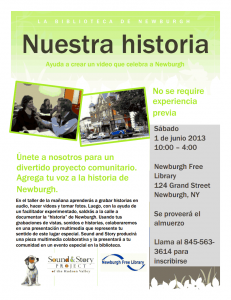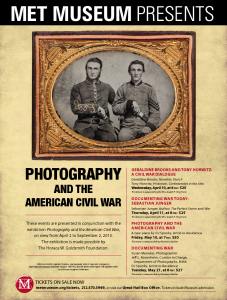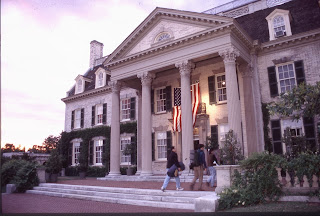 George Eastman House International Museum of Photography and Film announced today the appointment of Dr. Bruce Barnes as the Ron and Donna Fielding Director. Barnes will assume his role as eighth director of the museum—the world’s oldest museum of photography and one of the largest motion-picture archives—in October 2012.
George Eastman House International Museum of Photography and Film announced today the appointment of Dr. Bruce Barnes as the Ron and Donna Fielding Director. Barnes will assume his role as eighth director of the museum—the world’s oldest museum of photography and one of the largest motion-picture archives—in October 2012.
Barnes is the president and founder of American Decorative Art 1900 Foundation (ADA1900), a private foundation based in New York City, that works independently and in collaboration with museums across the United States to foster understanding and appreciation of American decorative art from the period around 1900.
Barnes is coauthor and editor of The Jewelry and Metalwork of Marie Zimmermann (2011), which was copublished by ADA1900 and Yale University Press. ADA1900 also copublished The Artistic Furniture of Charles Rohlfs (2008), an award-winning scholarly book that accompanied an exhibition of the same title co-organized by ADA1900 and the Milwaukee Art Museum. The exhibition traveled to the Dallas Museum of Art, Carnegie Museum of Art, Huntington Art Collections, and Metropolitan Museum of Art.
Barnes was chief executive officer of Element K, a Rochester-based company and pioneer in online learning, from 2000-2004, overseeing more than 800 employees. Over the course of his career, Barnes has held senior executive positions at Ziff Communications Company, Ziff Brothers Investments, Wasserstein Perella & Co., Reservoir Capital Group, and QFS Asset Management. He received a B.A., magna cum laude, and a Ph.D. in Economics from the University of Pennsylvania.
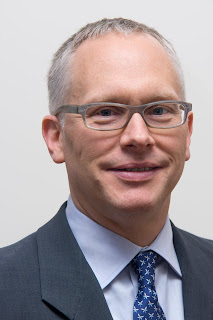
“I am honored to be selected to serve as the next director of George Eastman House,” said Barnes. “The range of its activities and opportunities is exhilarating. George Eastman House is a vital part of Rochester’s community. The museum’s unparalleled collections—in the areas of photography, cinema, and their technologies—and curators make important contributions on the international cultural scene, and its leading post-graduate programs advance the imperative of photography and film preservation around the world.”
“Having devoted most of the last seven years to collaborating with major museums across the country and furthering art scholarship, I am eager to apply my strategic and management skills to leading George Eastman House,” he said. “The house and a great many of the museum’s objects fall precisely within my longstanding interest in American art, decorative art, and architecture of the period from 1876 to 1940. My background in innovative online education will be invaluable to the creation of a virtual museum that will provide global access to its superb collections. I look forward to returning to Rochester and working with the Eastman House board of trustees and staff to advance the museum’s tradition of excellence and service to the community.”
“George Eastman House is an international treasure, a source of local pride, and a complex organization,” said Thomas H. Jackson, chairman of the George Eastman House Board of Trustees. “In Bruce Barnes, we have found the perfect individual to continue the museum’s progress and build the local, national, and international infrastructure and connections that will be essential to Eastman House’s future.
“Our collections and location, important in themselves, are also the springboard for essential work in preservation and an understanding of how the image can inform as well as reflect society,” Jackson said. “Dr. Barnes understands these interconnections in an impressively deep way and has the vision to take our past accomplishments and turn vision into reality. His extraordinary talents across so many dimensions are matched by his passion for George Eastman House and its potentiality. That’s a wonderful, winning, combination.”
Barnes’s appointment is the outcome of an international search process. He succeeds Dr. Anthony Bannon, who retired from George Eastman House in May after 16 years in the position.
“The Search Committee feels extraordinarily fortunate to have found in Dr. Barnes the combination of skills, experience, and passion needed for the challenges and opportunities that lie ahead for the George Eastman House,” said James A. Locke III, the George Eastman House trustee who chaired the Search Committee. “He is quite a remarkable fit for us with his excellent academic background, financial acumen, with prior positions with top Wall Street financial firms, and tested leadership as a CEO in Rochester.
“He is also an engaged collector with scholarly and passionate interests in the arts and museums,” Locke said. “Dr. Barnes can and will be an energetic and transformational leader who surely will make a great difference at George Eastman House and, in the view of the Search Committee, he will make a great difference in the presence and importance of the museum and its varied missions here and globally. We are thrilled with his appointment.”
About George Eastman House International Museum of Photography and Film
George Eastman House International Museum of Photography and Film combines world-class collections of photography and film with an active program of exhibitions, lectures, film screenings, and the National Historic Landmark house and gardens of George Eastman, the philanthropist and father of popular photography and motion picture film. Eastman House is also a leader in film preservation and photograph conservation, educating archivists and conservators from around the world through historic-process workshops and two graduate schools, the L. Jeffrey Selznick School of Film Preservation and the Photographic Preservation and Collections Management master’s degree program. Eastman House, which was established as an independent non-profit museum in 1947, is one of the world’s foremost museums of photography and the third largest motion-picture archive in the United States. The museum intertwines unparalleled collections, totaling more than 4 million objects, of photography, motion pictures, and cameras and technology, as well as literature of these fields of study. Learn more at eastmanhouse.org
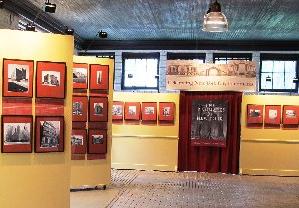 The Jay Heritage Center kicks off NY Heritage Weekend and the Path Through History Weekend with the opening of their first major photography exhibit, The Landmarks of New York, on Sunday June 2nd at 3pm.
The Jay Heritage Center kicks off NY Heritage Weekend and the Path Through History Weekend with the opening of their first major photography exhibit, The Landmarks of New York, on Sunday June 2nd at 3pm.